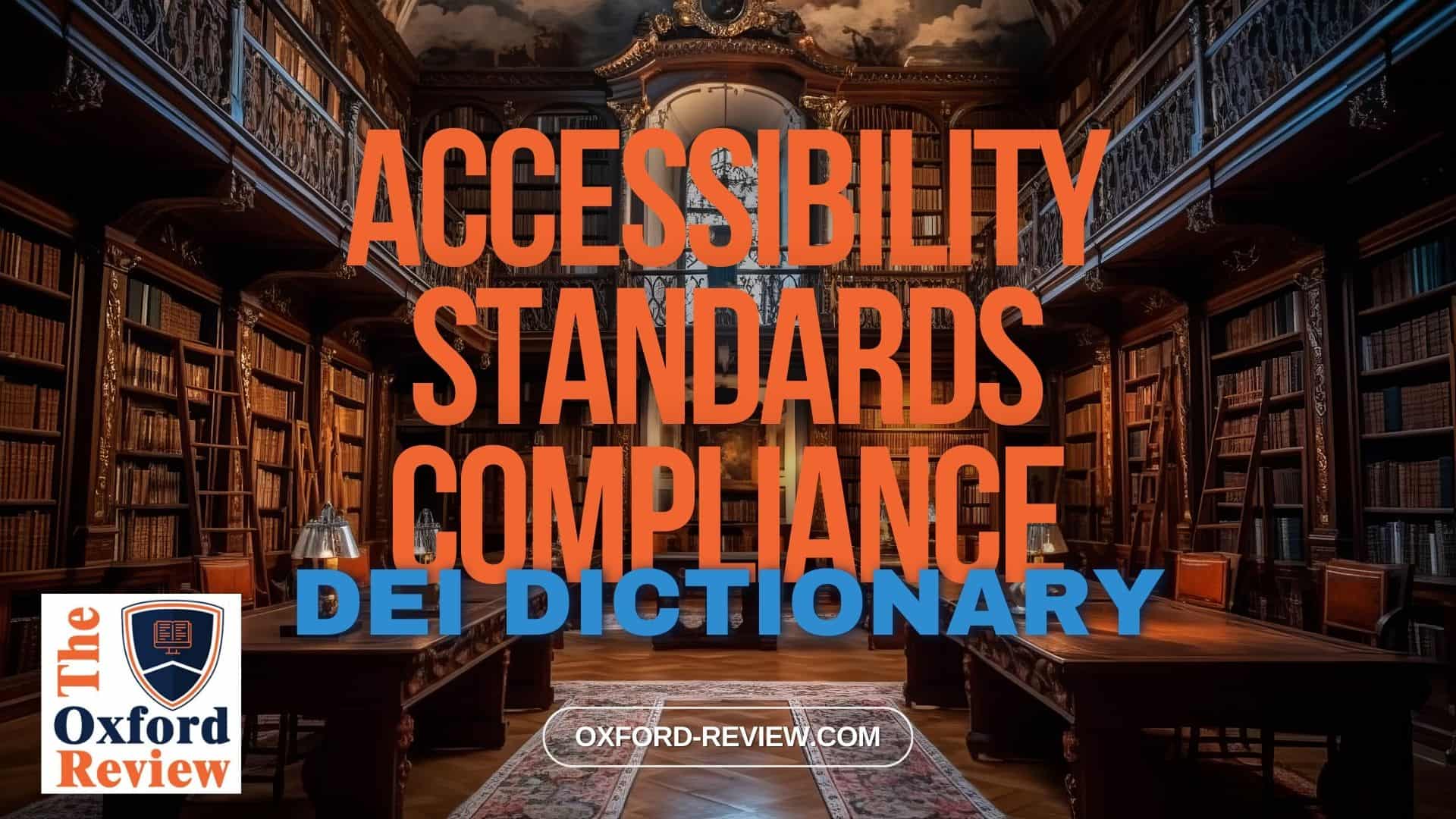Accessibility Standards Compliance – Definition and Explanation

Unlocking Access: Understanding Accessibility Standards Compliance
In the realm of Diversity, Equity, and Inclusion (DEI), Accessibility Standards Compliance stands as a vital cornerstone. It ensures that individuals of all abilities can access and participate in various facets of society without barriers. But what exactly does Accessibility Standards Compliance entail, and why is it crucial?
Definition:
Accessibility Standards Compliance refers to adhering to established guidelines and regulations to ensure that products, services, environments, and digital platforms are accessible to individuals with disabilities. These standards encompass a wide range of considerations, including physical infrastructure, technology, communication, and more.
Why is it Important?
Ensuring Accessibility Standards Compliance fosters inclusivity and equal opportunities for all individuals, regardless of their abilities. It promotes dignity, independence, and participation in various aspects of life, from education and employment to social interactions and public services. By prioritising accessibility, organisations contribute to a more equitable society and tap into the talents and perspectives of a diverse population.
Key Components:
- Physical Accessibility: This involves designing spaces, buildings, transportation, and facilities to accommodate individuals with mobility impairments, visual or hearing impairments, and other physical disabilities. Examples include wheelchair ramps, accessible parking spaces, and tactile signage.
- Digital Accessibility: In today’s digital age, ensuring that websites, applications, documents, and other online resources are accessible to everyone is paramount. This includes features such as alternative text for images, keyboard navigation, captioned videos, and screen reader compatibility.
- Communication Accessibility: Effective communication is essential for inclusivity. Accessibility Standards Compliance in communication involves providing accommodations such as sign language interpretation, Braille materials, large print documents, and accessible formats for individuals with sensory or cognitive disabilities.
Example:
Imagine a university committed to Accessibility Standards Compliance. They ensure that all campus buildings have wheelchair ramps and lifts for students with mobility impairments. Additionally, their website is designed following web accessibility guidelines, featuring alt text for images and transcripts for videos to accommodate students with visual or hearing impairments. Furthermore, during lectures and events, the university provides sign language interpreters and captioning services, ensuring that communication is accessible to all students, including those with disabilities.
Conclusion:
Accessibility Standards Compliance is not just a legal requirement; it’s a moral imperative and a catalyst for building a more inclusive society. By embracing accessibility in all its forms, organisations can unlock opportunities, foster diversity, and empower individuals of all abilities to fully participate and contribute to the world around them.
References:
Benjamin, A. (2010). Making Conformance Work: Constructing Accessibility Standards Compliance. University of Toronto. https://library-archives.canada.ca/eng/services/services-libraries/theses/Pages/item.aspx?idNumber=1033110132
Moreno, L., & Martínez, P. (2021). Accessibility compliance for e-government websites: laws, standards, and evaluation technology. In Research Anthology on Digital Transformation, Organizational Change, and the Impact of Remote Work (pp. 354-373). IGI Global. https://www.igi-global.com/chapter/accessibility-compliance-for-e-government-websites/270303
Be impressively well informed

Get the very latest research intelligence briefings, video research briefings, infographics and more sent direct to you as they are published
Be the most impressively well-informed and up-to-date person around...
